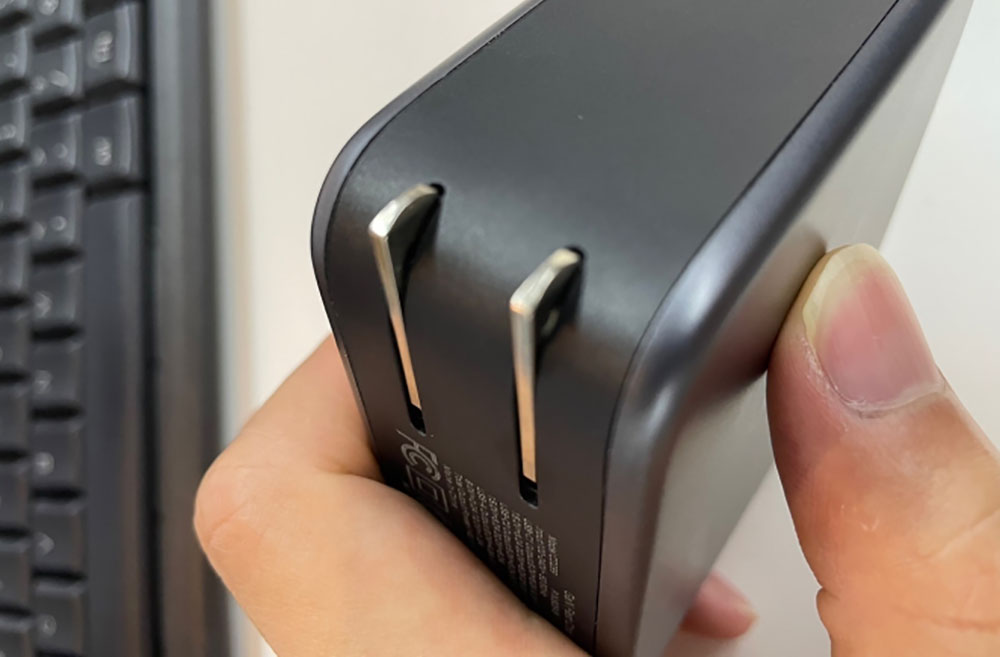The best USB-C charger for your MacBook Pro or Air
Description
<body>
Unlike the iPhone, Apple ships a USB-C power adapter with all its MacBooks: Air and Pro. Unless your laptop stays in the same place all of the time, having a spare or a specific travel MacBook charger is a useful addition. You can buy a second Apple charger or check out more versatile, cheaper and smaller MacBook chargers to suit your needs and budget.
It’s important to note that there are risks with buying a cheap charger and we don’t recommend you choose on price alone. That bargain MacBook charger might just fry your laptop or get dangerously hot. However, there are some great premium chargers from trusted brands that sell for less than Apple pricey chargers.
What to look for in a MacBook charger
PD charging
What you need is a Power Delivery (PD) charger that can connect to your MacBook via USB-C. PD chargers can support up to 240W of power, although the most common congregate around the standard laptop power requirements: 30W, 45W, 65W and 100W. All the USB-C chargers we have tested here are PD chargers. All the chargers tested here can also fast-charge an iPhone.
Wattage
The amount of power a charger can give your MacBook is, safety aside, the most important feature to look for when choosing a laptop charger.
A laptop is designed to draw up to a certain amount of watts when running at full power; that is when you are stretching it by using lots of apps or pushing the graphics and video rendering functions—not when you’re just browsing the web. This level of max power is what the manufacturer considers when it decides on the wattage of the charger it includes with the laptop.
When the laptop is idle or doing mundane jobs, it will draw only a small amount of power from the charger.
Fast Charging
Apple supports silicon fast charging on its latest MacBook models. When connected with the right charger and cable, you can charge a MacBook battery up to 50 per cent in 30 minutes. The M2 MacBook Air can be fast charged using a 65W or higher power adapter and the MagSafe or USB-C charging cable; see our M2 MacBook Air fast-charging tests.
On the 14-inch MacBook Pro, you can fast-charge with either Apple’s 140W USB-C Power Adapter and the USB-C to MagSafe 3 Cable, or a 96W or higher USB-C charger and USB-C to MagSafe 3 Cable or USB-C charge cable.
On the 16-inch MacBook Pro, you can only fast-charge with Apple’s 140W USB-C Power Adapter paired with the USB-C to MagSafe 3 Cable. Apple, Anker and UGreen are the only companies to make a power adapter that supports the latest PD 3.1 standard that supports power output to up to 240W; other USB chargers have a practical maximum of 100W.
It is fine to charge a laptop with a higher-wattage power adapter than it needs. It won’t charge it any quicker (unless you follow the fast-charge rules above), but rest assured that a premium charger such as the ones reviewed here won’t overcharge the MacBook battery and may have extra ports to change iPhones and other devices. If the charger has more wattage than it needs, it can use the spare power to charge other devices at the same time as the laptop.
Ports
Until the M2 MacBook Air arrived in July 2022, all Apple MacBook chargers had just one port. It makes sense, but more ports make even more sense as we all have more than one device that needs charging.
When you’re using your MacBook at full power, your charger might not have enough spare power for charging other devices unless you buy a charger with a higher wattage where the excess power can be channeled to your iPhone or AirPods at the same time as you power your laptop.
With its 35W Dual USB-C Port Compact Power Adapter Apple has finally released a MacBook charger with two ports for its MacBook Air, although at 35W total, you’re going to get much slower charging than using it on its own.
Portability
Apple’s silicon-based power adapters are mostly larger than third-party chargers that are built using Gallium nitride (GaN) technology. GaN is a material that produces less heat—and less heat means components can be closer together. This means GaN chargers can be smaller than previously possible.
Some of today’s GaN chargers are so small they can slip in your pocket, although you’ll still need to coil that USB-C cable somewhere too. Apple is late to the GaN party, but its recent GaN power adapters are certainly smaller than its older models.
 </figure>
</figure>UGreen
Due to their ultra-safe, sturdy three-pin Type G plug, the U.K. models are usually wider than their U.S. Type A and B plug counterparts. None, for instance, feature handy folding plug pins (see above) that can be found on a lot of the U.S. wall chargers. Apple actually has a 20W charger with folding U.K. plug pins but the space-saving technology hasn’t made it into the larger-capacity U.K. MacBook chargers yet.
Dimensions given in our reviews are for the U.S. models, which are also pictured for each product, but U.K. models are mostly also available.
Wall, desktop or strip
Most of the PD chargers we review here are wall chargers that plug straight into the power socket. You could also consider a desktop charger, which differs from a straight-to-socket wall charger by connecting to power via a longer plugged cable, so offering greater range. This is sometimes a neater and more versatile desk solution, but isn’t as pocketable for travel as a wall charger that requires just the charger-to-device cable.
Another option is a power strip or extender. The best we’ve seen is from UGreen. Its 100W 7-in-1 power strip features two 100W PD USB-C ports, one 22.5W USB-C and one 22.5W USB-A port, plus an extension plug socket on its top.
Cable
You need to connect the charger to your MacBook using a USB-C to USB-C charging cable or USB-C to MagSafe cable.
If your Mac has a MagSafe 3 port (MacBook Air introduced in 2022; 14-inch and 16-inch MacBook Pro introduced in 2021), you can use Apple’s own USB-C to MagSafe 3 Cable (PD 3.1-supporting 240W maximum). As well as freeing up one of the MacBook’s Thunderbolt ports, this can protect from accidental cable pulls and is required for MacBook fast-charging on the 16in, but it is expensive at $49/£49 compared to a quality USB-C cable. Apple’s USB-C to USB-C charging cables (100W maximum) cost $19/£19 but you can find quality USB-C charging cables cheaper, for example from UGreen (direct U.S. / Amazon.com / Amazon U.K.).
Few of the chargers reviewed here come with a USB-C cable. Of course, you can use the cable that shipped with your MacBook, but having a spare is always useful.
Here are our reviews of our favorite MacBook chargers. Later, we give more specific tips on buying the right charger for your model of MacBook Air or MacBook Pro.
<div class="wp-block-product-chart-item product-ch





